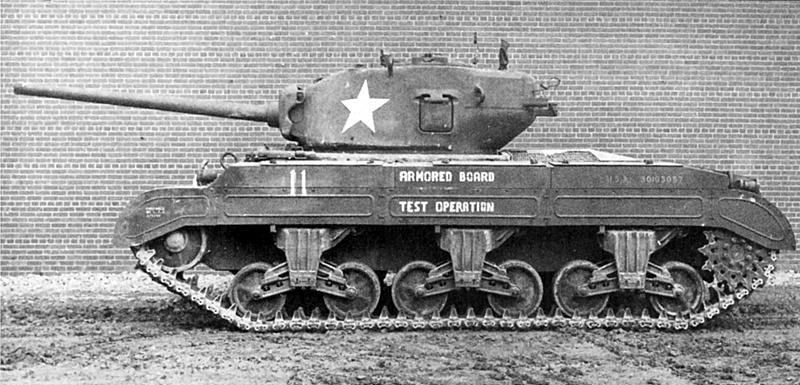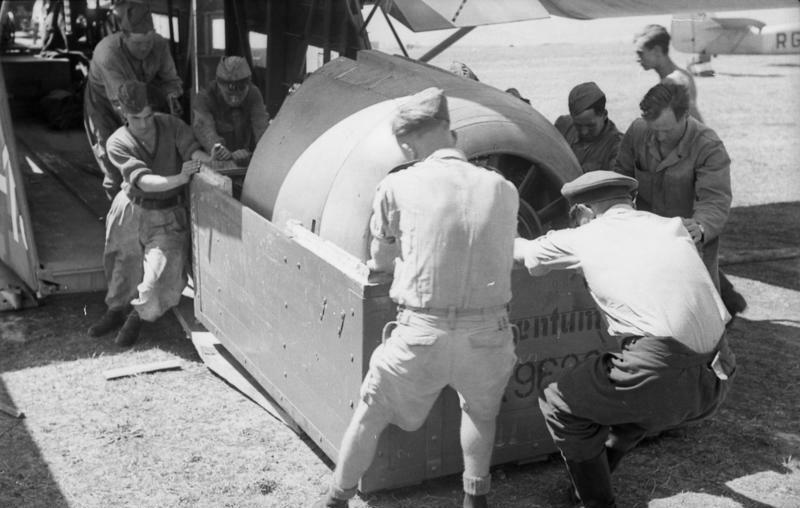|
Power Pack (drivetrain)
A powerpack or power pack is a part of a modular powertrain that contains some type of engine (most frequently an internal combustion engine, ŌüŻŌüŻ but other types, including electric motors, are possible) and may also contain a transmission and various supporting components. Applications Power packs are used with certain types of industrial equipment designs, including vehicle designs such as self-propelled modular transporter, hydraulic modular trailer, forklifts and cherry picker lifts, but also stationary equipment such as paint sprayers. Virtually all modern military tanks use them, an early example being the M26 Pershing and Chieftain, and many other military vehicles as well. Advantages The modularity is what makes a powerpack powertrain different from other types; using the term powerpack implies that the whole unit can be easily removed or separated from the rest of the machine, allowing it to be rapidly replaced by another powerpack while the original is repaired or ... [...More Info...] [...Related Items...] OR: [Wikipedia] [Google] [Baidu] |
M26 Pershing
The M26 Pershing was a heavy tank/ medium tank of the United States Army. It was used in the last months of World War II during the Invasion of Germany and extensively during the Korean War. The tank was named after General of the Armies John J. Pershing, who led the American Expeditionary Force in Europe in World War I. The M26 was intended as a replacement of the M4 Sherman, but a prolonged development period meant that only a small number saw combat in Europe. Based on the criteria of firepower, mobility, and protection, US historian R. P. Hunnicutt ranked the Pershing behind the German Tiger II heavy tank, but ahead of the Tiger I heavy and Panther medium tanks. It was withdrawn in 1951 in favor of its improved derivative, the M46 Patton, which had a more powerful and reliable engine and advanced suspension. The lineage of the M26 continued with the M47 Patton, and was reflected in the new designs of the later M48 Patton and M60 Patton. Production history Development ... [...More Info...] [...Related Items...] OR: [Wikipedia] [Google] [Baidu] |
Hydraulic Modular Trailer
Hydraulics (from Greek language, Greek: ╬ź╬┤Žü╬▒Žģ╬╗╬╣╬║╬«) is a technology and applied science using engineering, chemistry, and other sciences involving the mechanical properties and use of liquids. At a very basic level, hydraulics is the liquid counterpart of pneumatics, which concerns gases. Fluid mechanics provides the theoretical foundation for hydraulics, which focuses on the applied engineering using the properties of fluids. In its fluid power applications, hydraulics is used for the generation, control, and transmission of Power (physics), power by the use of pressure, pressurized liquids. Hydraulic topics range through some parts of science and most of engineering modules, and cover concepts such as pipe Volumetric flow rate, flow, dam design, fluidics and fluid control circuitry. The principles of hydraulics are in use naturally in the human body within the vascular system and erectile tissue. Free surface hydraulics is the branch of hydraulics dealing with free ... [...More Info...] [...Related Items...] OR: [Wikipedia] [Google] [Baidu] |
Power Module
A power module or power electronic module provides the physical containment for several power components, usually power semiconductor devices. These power semiconductors (so-called dies) are typically soldered or sintered on a power electronic substrate that carries the power semiconductors, provides electrical and thermal contact and electrical insulation where needed. Compared to discrete power semiconductors in plastic housings as TO-247 or TO-220, power packages provide a higher power density and are in many cases more reliable. Module Topologies Besides modules that contain a single power electronic switch (as MOSFET, IGBT, BJT, Thyristor, GTO or JFET) or diode, classical power modules contain multiple semiconductor dies that are connected to form an electrical circuit of a certain structure, called topology. Modules also contain other components such as ceramic capacitors to minimize switching voltage overshoots and NTC thermistors to monitor the module's substrate temp ... [...More Info...] [...Related Items...] OR: [Wikipedia] [Google] [Baidu] |
Power-egg
A power-egg is a complete "unitized" modular engine installation, consisting of engine and all ancillary equipment, which can be swapped between suitably designed equipment, with standardised quick-changing attachment points and connectors. In aircraft so designed the power-egg is typically removed before mean time to failure is reached and a fresh one installed, the removed engine then being sent for maintenance. Spare power-eggs may be stored in sealed containers, to be opened when needed. The power-egg or ''Kraftei'' format was used in some German Second World War era aircraft, particularly for twin or multi-engined airframe designs. It existed in two differing formats ŌĆō the initial ''Motoranlage'' format which used some specialized added components depending on what airframe it was meant for use on, and the ''Triebwerksanlage'' format, a more complete unitization format usually including exhaust and oil cooling systems. Applications Germany Inline and radial engines wer ... [...More Info...] [...Related Items...] OR: [Wikipedia] [Google] [Baidu] |
Prime Mover (locomotive)
In engineering, a prime mover is an engine that converts fuel to useful work. In locomotives, the prime mover is thus the source of power for its propulsion. In an engine-generator set, the engine is the prime mover, as distinct from the generator. Definition In a diesel-mechanical locomotive, the prime mover is the diesel engine that is mechanically coupled to the driving wheels (drivers). In a diesel-electric locomotive, the prime mover is the diesel engine that rotates the main generator responsible for producing electricity to power the traction motors that are geared to the drivers. The prime mover can also be a gas turbine instead of a diesel engine. In either case, the generator, traction motors and interconnecting apparatus are considered to be the power transmission system and not part of the prime mover. A wired-electric or battery-electric locomotive has no on-board prime mover, instead relying on an external power station. Weight distribution The power unit rep ... [...More Info...] [...Related Items...] OR: [Wikipedia] [Google] [Baidu] |
Bild 14 PST Einsatz 2014
''Bild'' (or ''Bild-Zeitung'', ; ) is a German tabloid newspaper published by Axel Springer SE. The paper is published from Monday to Saturday; on Sundays, its sister paper ''Bild am Sonntag'' ("''Bild on Sunday''") is published instead, which has a different style and its own editors. ''Bild'' is tabloid in style but broadsheet in size. It is the best-selling European newspaper and has the sixteenth-largest circulation worldwide. ''Bild'' has been described as "notorious for its mix of gossip, inflammatory language, and sensationalism" and as having a huge influence on German politicians. Its nearest English-language stylistic and journalistic equivalent is often considered to be the British national newspaper '' The Sun'', the second-highest-selling European tabloid newspaper.Sex, Smut and Shock: B ... [...More Info...] [...Related Items...] OR: [Wikipedia] [Google] [Baidu] |
Chieftain (tank)
The List of FV series military vehicles, FV4201 Chieftain was the main battle tank of the United Kingdom during the 1960sŌĆō1990s. A development of the Centurion tank, Centurion, the Chieftain introduced the supine (reclining) driver position to British design allowing a heavily sloped hull with reduced height. A new powerpack and improved transmission gave it higher speed than the Centurion despite being heavier due to major upgrades to armour protection and the armament; this allowed it to replace both the Conqueror (tank), Conqueror and Centurion (tank), Centurion while performing their roles effectively. It remained in service until replaced by the Challenger 1 which shared many of the Chieftain's features. Development The Chieftain was an evolutionary development of the successful cruiser tank, cruiser line of tanks that had emerged at the end of the World War II, Second World War. Its predecessor, the centurion tank, Centurion main battle tank (MBT), is widely considered to ... [...More Info...] [...Related Items...] OR: [Wikipedia] [Google] [Baidu] |
Tank
A tank is an armoured fighting vehicle intended as a primary offensive weapon in front-line ground combat. Tank designs are a balance of heavy firepower, strong armour, and good battlefield mobility provided by tracks and a powerful engine; usually their main armament is mounted in a turret. They are a mainstay of modern 20th and 21st century ground forces and a key part of combined arms combat. Modern tanks are versatile mobile land weapons platforms whose main armament is a large-caliber tank gun mounted in a rotating gun turret, supplemented by machine guns or other ranged weapons such as anti-tank guided missiles or rocket launchers. They have heavy vehicle armour which provides protection for the crew, the vehicle's munition storage, fuel tank and propulsion systems. The use of tracks rather than wheels provides improved operational mobility which allows the tank to overcome rugged terrain and adverse conditions such as mud and ice/snow better than wheeled vehicles, ... [...More Info...] [...Related Items...] OR: [Wikipedia] [Google] [Baidu] |
Powertrain
A drivetrain (also frequently spelled as drive train or sometimes drive-train) is the group of components that deliver mechanical power from the prime mover to the driven components. In automotive engineering, the drivetrain is the components of a motor vehicle that deliver power to the drive wheels. This excludes the engine or motor that generates the power. In marine applications, the drive shaft will drive a propeller, thruster, or waterjet rather than a drive axle, while the actual engine might be similar to an automotive engine. Other machinery, equipment and vehicles may also use a drivetrain to deliver power from the engine(s) to the driven components. In contrast, the powertrain is considered to include both the engine and/or motor(s) as well as the drivetrain. Function The function of the drivetrain is to couple the engine that produces the power to the driving wheels that use this mechanical power to rotate the axle. This connection involves physically linking the ... [...More Info...] [...Related Items...] OR: [Wikipedia] [Google] [Baidu] |
Forklift
A forklift (also called lift truck, jitney, hi-lo, fork truck, fork hoist, and forklift truck) is a powered industrial truck used to lift and move materials over short distances. The forklift was developed in the early 20th century by various companies, including Clark Material Handling Company, Clark, which made Transmission (mechanics), transmissions, and Yale Materials Handling Corporation, Yale & Towne Manufacturing, which made Hoist (device), hoists. Since World War II, the use and development of the forklift truck have greatly expanded worldwide. Forklifts have become an indispensable piece of equipment in manufacturing and warehousing. In 2013, the top 20 manufacturers worldwide posted sales of $30.4 billion, with 944,405 machines sold. History The middle nineteenth century through the early 20th century saw the developments that led to today's modern forklifts. The forerunners of the modern forklift were manually-powered hoists that were used to lift loads. In 1906, th ... [...More Info...] [...Related Items...] OR: [Wikipedia] [Google] [Baidu] |
Hydraulic Modular Trailer
Hydraulics (from Greek language, Greek: ╬ź╬┤Žü╬▒Žģ╬╗╬╣╬║╬«) is a technology and applied science using engineering, chemistry, and other sciences involving the mechanical properties and use of liquids. At a very basic level, hydraulics is the liquid counterpart of pneumatics, which concerns gases. Fluid mechanics provides the theoretical foundation for hydraulics, which focuses on the applied engineering using the properties of fluids. In its fluid power applications, hydraulics is used for the generation, control, and transmission of Power (physics), power by the use of pressure, pressurized liquids. Hydraulic topics range through some parts of science and most of engineering modules, and cover concepts such as pipe Volumetric flow rate, flow, dam design, fluidics and fluid control circuitry. The principles of hydraulics are in use naturally in the human body within the vascular system and erectile tissue. Free surface hydraulics is the branch of hydraulics dealing with free ... [...More Info...] [...Related Items...] OR: [Wikipedia] [Google] [Baidu] |





